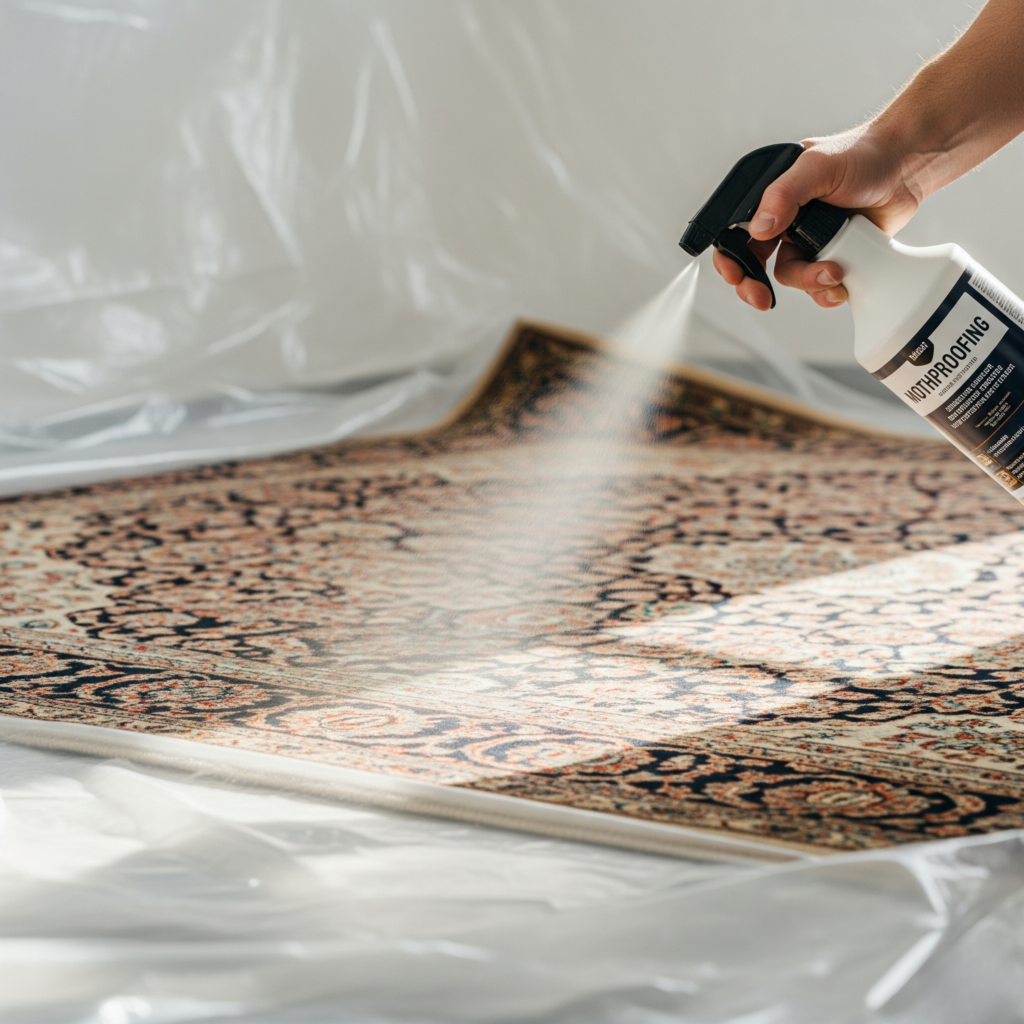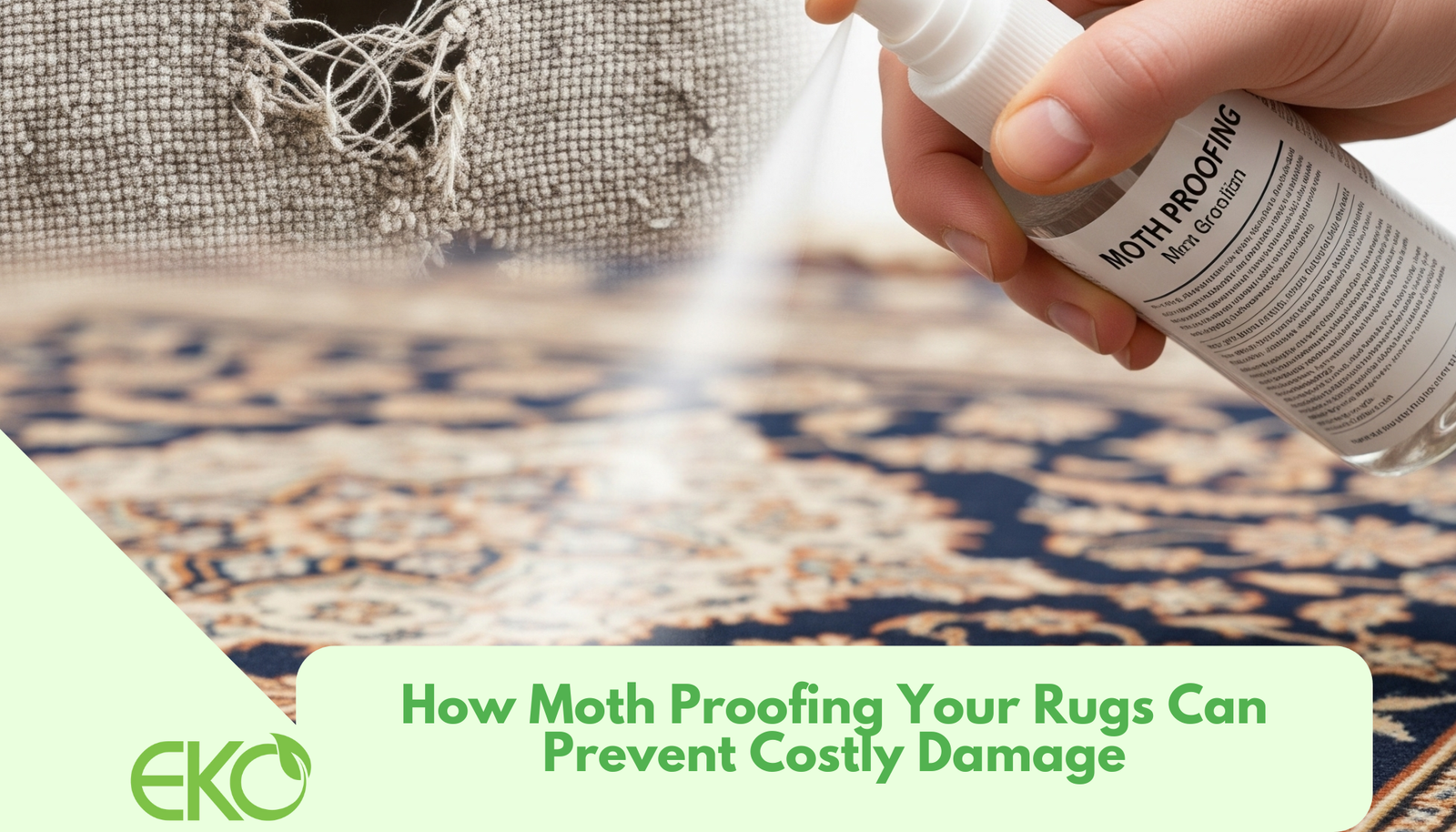Introduction
Imagine discovering that your beautiful wool or silk rug, passed down for generations or newly purchased, has mysterious holes or bare patches. Often, the culprit isn’t wear and tear, but moths. Moth-proofing your rugs is a critical yet often overlooked step that helps protect them from costly damage. Here’s why this matters, how it works, and what steps you can take to safeguard your investment.
Why Moths Love Rugs
Moths, especially the clothes moth (Tineola bisselliella), thrive in dark, undisturbed places and feed on keratin, a protein found in natural fibers like wool, silk, and even some blends.
Rugs are especially vulnerable because:
- They often lie under furniture or in low-traffic areas.
- Dirt, food crumbs, and pet hair add nutrients that moth larvae love.
- Many homeowners forget to check or clean the underside regularly.
Result:
Moth larvae chew through the fibers, creating visible damage that can cost thousands to repair or render your rug irreparable.
How Moth Proofing Works
Moth proofing typically involves applying a safe, invisible treatment that deters moth larvae from feeding on rug fibers.
Professional rug moth proofing:
- Uses non-toxic, wool-safe solutions.
- Leaves no odor or residue.
- Won’t alter the rug’s color, texture, or value.
The Real Cost of Moth Damage
Repairing a moth-damaged rug is often more expensive than preventing the damage in the first place. Costs include:
- Professional cleaning to remove eggs and larvae.
- Reweaving or patching holes, especially in intricate oriental rugs.
- Devaluation of antique or collectible pieces.
Example:
Fixing small moth damage on a hand-knotted oriental rug can cost $500–$1,500. Severe damage could make replacement necessary.
Benefits of Moth Proofing Your Rugs
1. Protects Your Investment
Whether your rug is an heirloom or a new purchase, moth proofing extends its life and preserves its beauty.

2. Peace of Mind
Regular mothproofing and inspections mean you won’t discover damage too late.
3. Safe & Eco-Friendly Options
Today’s mothproofing treatments avoid harsh chemicals, making them safe for children, pets, and your indoor air quality.
4. Complements Regular Cleaning
Combining mothproofing with professional rug cleaning removes eggs, larvae, and debris that attract moths in the first place.
DIY Tips to Prevent Moth Infestation
Even if you use professional mothproofing, these habits add extra protection:
- Rotate rugs every 6–12 months to expose all areas to light and airflow.
- Vacuum both sides regularly, especially under furniture.
- Avoid storing rugs in damp basements or hot attics.
- Use sealed, breathable covers for stored rugs.
- Inspect rugs twice a year for early signs of larvae (tiny, white worms) or moth casings.
Signs Your Rug May Already Have Moth Damage
- Irregular holes or thinning patches.
- Fine sandy debris (larval droppings) beneath the rug.
- Shedding pile when gently brushing the rug.
- Small white larvae or silky webbing on the rug’s underside.
Tip:
If you spot these signs, contact a professional rug cleaner immediately for inspection and treatment.
How Often Should You Mothproof Your Rugs?
For rugs made of wool, silk, or blended natural fibers:
- Professional mothproofing every 12 to 18 months is ideal.
- More frequently, if the rug is in a dark, low-traffic area or near exterior doors.

Conclusion
Moth damage doesn’t just ruin your rug’s look; it destroys history, value, and cherished memories. Moth-proofing your rugs is a simple, affordable step that can save you from expensive repairs or replacement. Combine it with regular cleaning and inspections to keep your rugs vibrant, valuable, and moth-free for generations to come. Contact us today!




